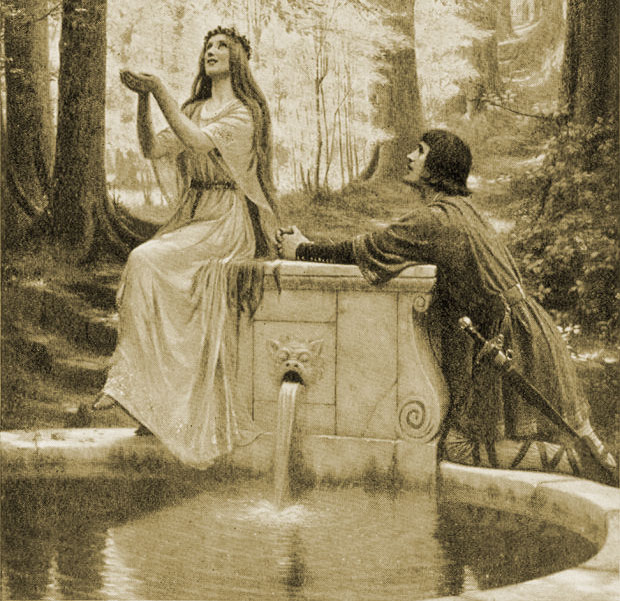Belgian playwright Maurice Maeterlinck’s Pelléas et Mélisande tells the story of Golaud who encounters the mysterious Mélisande in the forest, and marries her. But very soon, Mélisande finds her true love in the person of Pelléas, Golaud’s half-brother. Golaud becomes suspicious of the lovers, killing Pelléas and wounding Mélisande. Mélisande dies in childbirth, and Golaud continues his descent into madness.
In the twelve years following the play’s 1893 premiere in Paris, four great composers wrote music inspired by Maeterlinck’s masterpiece – Claude Debussy (opera), Gabriel Faure (incidental music), Arnold Schoenberg (symphonic poem) and Jean Sibelius (incidental music).
After Debussy completed an early version of his opera in 1895, British actress Mrs. Patrick Campbell (soon to play the role of Mélisande in London), requested Debussy to excerpt a symphonic suite from the opera to accompany the play’s London production. Debussy refused. Mrs. Campbell then asked Faure to write incidental music to Maeterlinck’s play. Faure agreed. After a one-month collaboration with orchestrator Charles Koechlin, the score of the Incidental Music to Pelléas et Mélisande, Op. 80 was ready. Maeterlinck, present at the 1898 London premiere of the translated play — accompanied by Faure’s incidental music — wrote to Mrs. Campbell, “In a few words, you filled me with an emotion of beauty the most complete, the most harmonious, the sweetest that I have ever felt to this day.”
The orchestral suite consists of four numbers — Prelude (the prelude to Act I in Faure’s complete orchestral score), La Fileuse (Mélisande at the spinning wheel), Sicilienne (the actual prelude to Act II with one of the most famous flute solos in the symphonic repertoire) and La Mort de Mélisande (the Prelude to Act III).
Pelleas et Melisande Suite
Op. 80
Composed in 1893
By Gabriel Faure






